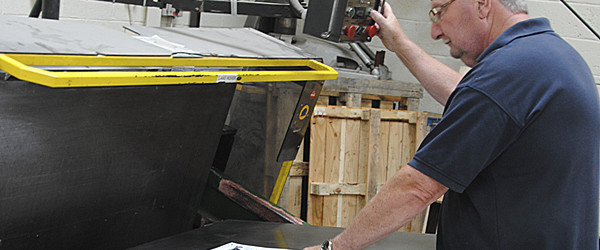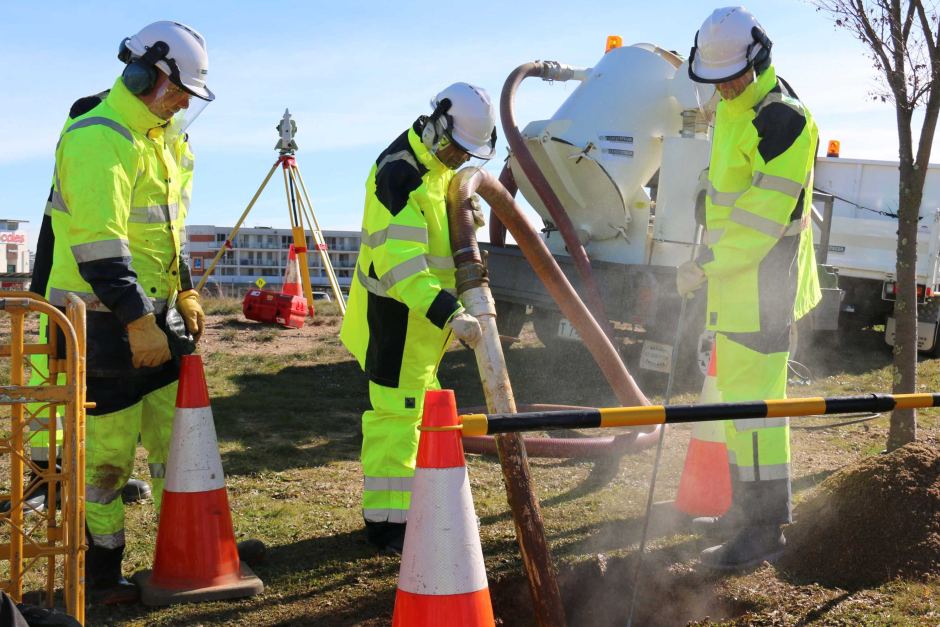The need for clean room die cutting is growing rapidly. That’s because the number of products on the market that require large production runs in a clean room environment is exploding. In the medical market alone, new products are being introduced daily, including items like self-diagnostic test kits, heart monitor patches, and new types of burn dressings. Clean room die cutting is ideal for thousands of products like surgical tools, implants, and packaging for medical supplies, filters for medical machines, implants, colostomy bags, and transdermal patches of all kinds.
Clean room die cutting isn’t just reserved for medical supplies like bandages and wound coverings. Die cutting machines can be set up in a clean room to perform cutting procedures on tissue that formerly had to be cut by hand, saving a lot of time and money over previous methods. Clean room die cutting now takes care of things like skin grafts, collagen, and heart valves. It’s a very versatile way to handle large amounts of
repetitive cutting without a lot of handwork. This also avoids most of the handling of the tissue material that can lead to a degradation of its quality. Because dies can be laid out to cut repetitively in a closely bunched pattern, there is also less waste than cutting by hand methods.
Clean room die cutting isn’t restricted to the medical sector. Clean room manufacturing experts like BarilCorp.com offer flatbed and rotary die cutting services and expertise for customers working for the military, pharmaceutical, electronic, homeland security, and other industries that need absolutely clean environments that retain high-production capabilities.
The Challenges of Clean Room Die Cutting
Die cutting in a clean room poses two big challenges to the manufacturer. The machine must not contaminate the room that it is placed in, and it must also not contaminate the material that it cuts. This makes clean room equipment for die cutting unlike any other die cutting equipment for any other industry. For most industries, even food service, die cutters only have to worry about the ease of cleaning and decontaminating the die cutters and conveyor that the material touches. In a clean room environment that deals with sensitive medical manufacturing, the need for cleaning and disinfecting becomes acute. But beyond that, there needs to be almost no exposed moving parts on the machine that could possibly introduce contamination into the air or onto surrounding surfaces.
Manufacturers and designers solve this problem in various ways. The most common feature of all clean room die cutting machines is an exterior fashioned from either stainless steel or nickel-coated carbon steel. These materials have a long track record in hospitals, laboratories, and operating theaters, and the cleaning supplies for use on their surfaces are well tested in many settings. Not only are the exterior surfaces clad in impervious metals, they’re also fabricated in the smoothest possible shapes in order to avoid any area that might invite any type of contaminant to build up, or to be difficult to reach during daily or spot cleaning.
Keeping the Moving Parts Hidden
For flatbed die cutters, there are almost no moving parts visible anywhere on the machine. The material is placed on a platen, and then the operator slides it in place under the cutting dies. Controls that require knobs or other penetrations in the outside shell of the machine are kept to a minimum. Touchpads are preferred for operating the machine wherever possible. It’s customary for the machines to have a limited amount of accessory holders within easy reach of the operator, and they are manufactured entirely from a type of ABS plastic that is common in medical settings.
Any clean room die cutting machines operate using pneumatic pumps to apply the pressure to the platen and the material to be cut. This will require a substantial air supply, as a typical machine might bring up to 40 tons of pressure to bear on the work surface. If possible, designers specify that the air supply for the machines be generated outside the room, with pneumatic lines in and out. Hydraulic machines are also available if pneumatic installations are not practical, but they’re harder to detail for clean room standards. Air must also be introduced and then exhausted from the work area to keep the work from spreading any contamination into the air while it is in operation.
Sightlines Can Be Tricky
Because it’s necessary to keep the operator safe, and the moving parts of the machinery are inside a substantial housing, sightlines on the work can be compromised in some cases. Some manufacturers have responded to this by including a video feed with a camera or cameras mounted inside the housing. This gives the operator a detailed view from a vantage point that’s not available anywhere outside the machine. Results are improved, and the video camera can also be set up to allow zooming in and out to improve the sightlines further. This video feed also improves operator safety, as it makes it less likely that a poor sightline could tempt the operator into placing their face or hands too close to the moving parts.
To speed up operation, the die cutter can be provided with roller feeds to make the production of hundreds or thousands of parts per hour. Because of the close tolerances required for many types of clean room die cutting operations, precise depth control is very important, and it’s important for the operator to be able to continuously monitor the output and make fine adjustments to the settings on the fly. Depth control is usually calibrated down to one-thousandth of an inch.
Finely tuned settings aren’t enough to produce precise work on their own. The machinery itself has to be manufactured to produce very flat surfaces, and parallelism tolerances have to be very tight, especially on machines with larger platens that use die cutters in multiple arrays. It’s also vital that the platen or the die doesn’t deflect under pressure, so the bearings and trunnions on the machines are extremely robust.



